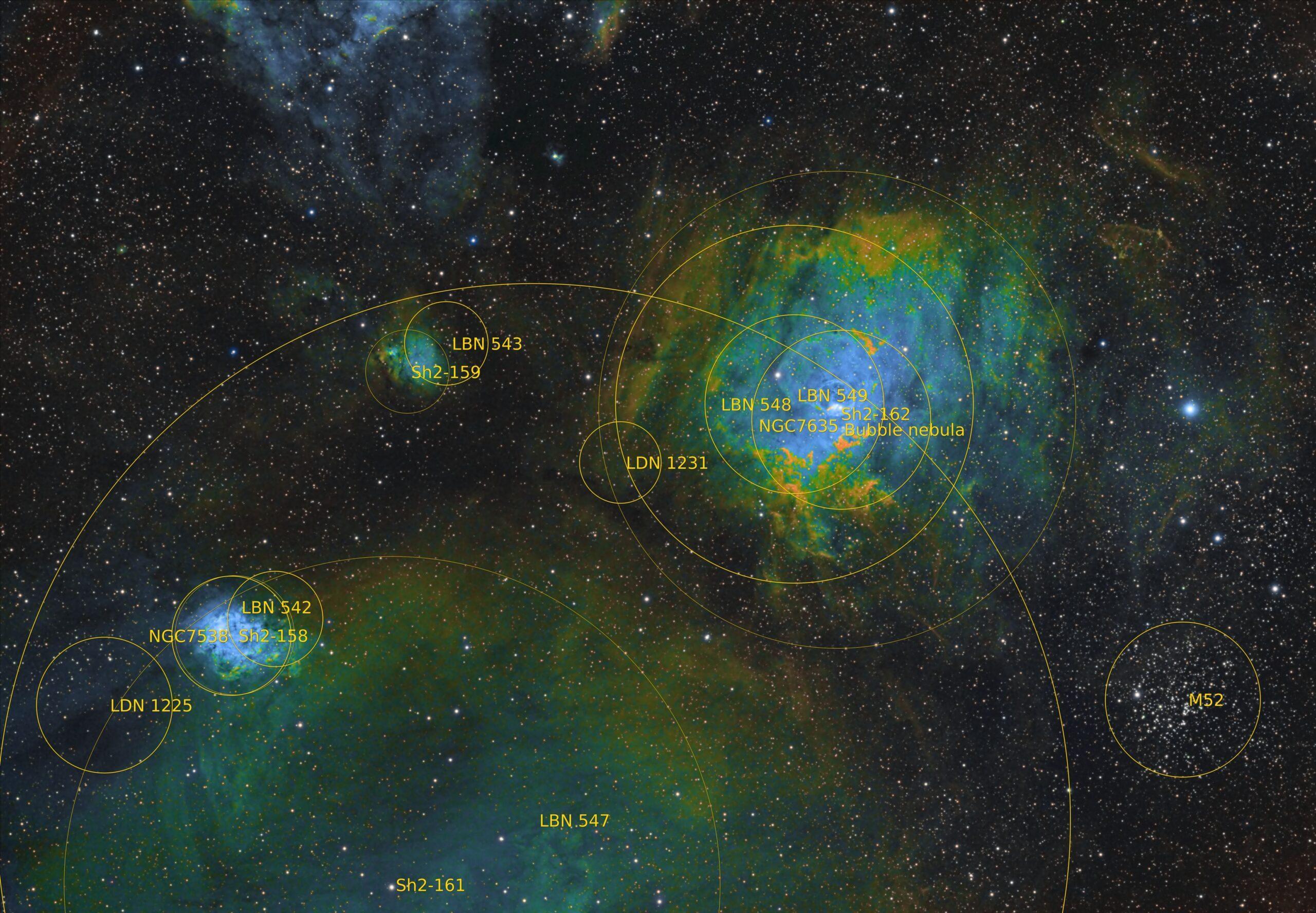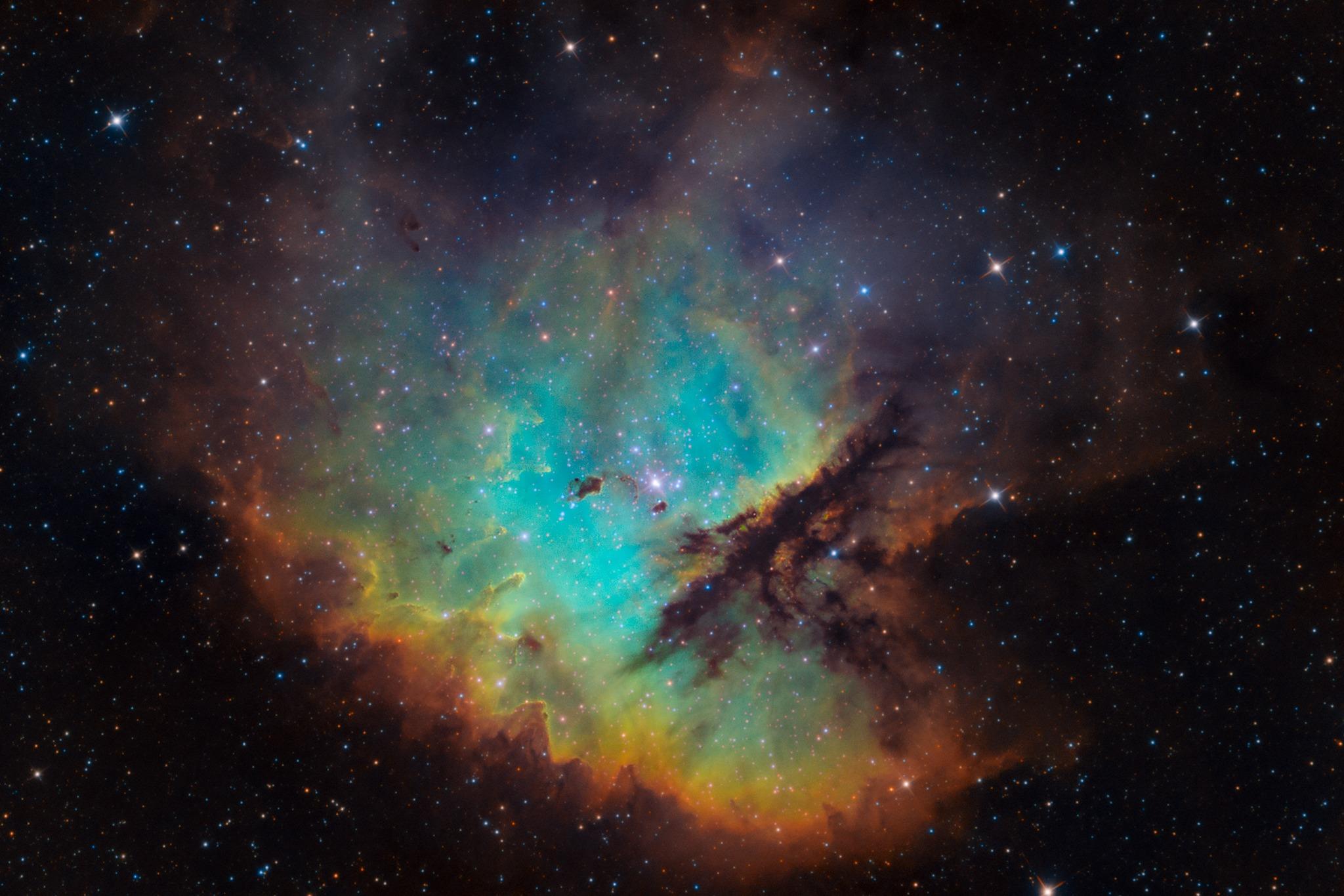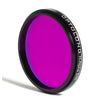Optolong H-alpha 3nm Ultra Narrow Band Deep Sky Imaging Filter 2" for CCD/CMOS Astro Photography
Here below you will find a description of all three types of filters for your information as a full bundle is also available, however this product listing is only for the Optolong 3nm H-alpha filter.
Please note, if you buy the full HSO bundle you will save some money in comparison to the price of the individual items.
General Product Description for All Versions
The Optolong SHO-3nm filter kit (available separately) includes SII 3nm, H-Alpha 3nm, and OIII 3nm narrow band filters, generally working with astronomical monochrome cooling CCD and modified DSLR imaging in each single-channel. Corresponding with RGB channel (HA, OIII, SII), photographers can process Hubble images by astronomical post processing software.
The extra narrowband SIICCD3nm filter (Sulphur II for CCD) is designed for nebula observation allowing 3nm bandwidth of light centered on a wavelength of 672nm through, and reducing the transmission of certain wavelengths of light, specifically those produced by artificial light including mercury vapor, and both high and low pressure sodium vapor lights and the unwanted natural light caused by neutral oxygen emission in our atmosphere (i.e. skyglow)
The ultra narrowband OIII-CCD 3nm filter is designed for nebula observation allowing 3nm bandwidth of light centered on a wavelength of 500nm through, which corresponds to OIII emission line, and reducing the transmission of certain wavelengths of light, specifically those produced by artificial light including mercury vapor, and both high and low pressure sodium vapor lights and the unwanted natural light caused by neutral oxygen emission in our atmosphere (i.e.skyglow).
OIII emits 495.9nm and 500.7nm and it is a blue-green colored filter. Many of images of planetary nebula and supernoval remnants are taken only with H-Alpha and OIIII filters. They show great structural details, but have natural colors, looking like an RGB image.
Main Use and Performance of the H-alpha Filter (this product listing)
The H-Alpha 3nm filter is a popular narrowband filter allowing 3nm bandwidth of light centered on a wavelength of 656nm through, and reducing the transmission of certain wavelengths of light, specifically those produced by artificial light including mercury vapor, and both high and low pressure vapor lights and unwanted natural light caused by neutral oxygen emission in our atmosphere (i.e.skyglow). Better choice of narrowband H-Alpha astrophotographer filter for highest contrast and revealing subtle nebula details.
Features
Give you higher contrast and greater detailed viewing;
Decrease background noise and improve the contrast of the object;
Increase the faint nebula signal and make it brighter;
With a narrow band fitlers kit you are able to process a Hubble-like image (Hubble-palette);
Through the optimization of the substrate and upgraded coating technology.
WARNING:
Optolong filters are not designed for solar observation. DO NOT LOOK AT THE SUN WITH ANY OPTOLONG FILTER as permanent eye damage will be the result.
Technical Data
- Substrate material
- Glass thickness of 2" version: 1.85mm;
- Glass thickness of 36mm version: 2.0mm
- Surface Quality: 60/40 (Refer to MIL-O-13830)
- Fine-optically polished to ensure accurate 1/4 wavefront and < 30 seconds parallelism over both surfaces
- 85-86% transmission at major OIII line at 500nm
- Light pollution emission is blocked >99.9%
Filter Cell (only for filters in a cell)
- Ultra-thin filter cell minimise vignetting by maximising possible clear aperture (clear aperture is 26mm for 1.25” size and 45mm for 2” size)
- Aerometal Material
- Precise CNC Machining
- Sand Blasting Process
- Black Anodized Finish
- Extinction Treatment to Prevent Reflection
- Laser Engraving No Fading
Available Sizes
- Standard 2”
- Round 36mm Unmounted
Packaging
- Plastic PP Case
- Imported High Pressure EVA Case Lining
- Silver Cardboard Box
- High Density Sponge Carton Lining
Optical Coating
- Non-cementing optical substrate coating
- Electron-beam gun evaporation with Ion-assisted deposition coating technology for durability and resistance to scratching, as well as stability on CWL (central wavelength) no deviation affected by temperature change.
- Planetary rotation system offers precision and homogeneity of coatings ensuring high value on transmission of pass-band and Optical density of off-band. (Please note, "planetary rotation system" is a type of optical coating process and does not refer to the astronomical system describing the motion of the planets in our solar system.)
The Major Emission Lines of Nebulae: H-α 656.3nm, H-β486.1nm, OIII 495.9nm, OIII 500.7nm
The Major Emission Lines of Artificial Light Pollution: Hg 435.8nm, 546.1nm, 577nm, 578.1nm, Na 598nm, 589.6nm, 615.4nm, 616.1nm
Optolong SHO-3nm Narrowband Filters Performance
As we all know, OIII narrow band filters always had a problem with halos around brigth stars. Thanks to Optolongs long standing experiences with their 7nm narrow band filters, the halo of OIII 3nm filter was optimized by improving the coating technology. Here we also conducted a qualitative halo test of the bright star of the Veil Nebula, and it can be seen from the original picture that the OIII 3nm performs very well on the bright star.
Telescope:RASA 11 at f2
Camera:QHY 600
Mount:艾顿 IOptron CEM120
Optolong OIII-3nm single 10min
Copyright: Wuzhen

I. The Bubble Nebula (NGC 7635) © Astrodoc Ron Brecher
Acquisition, focusing, and control of Paramount MX mount with N.I.N.A., TheSkyX and PHD2. Focus with Optec DirectSync motor and controller. Equipment control with PrimaLuce Labs Eagle 4 Pro computer. All pre-processing and processing in PixInsight. Acquired from Ron‘s SkyShed in Guelph. Average transparency and seeing. Data acquired Oct 18-19, 2021 under a brightly moonlit sky (Moon 12 days old)..
Sky-Watcher Esprit 150 f/7 refractor and QHY600M camera with Optolong H-alpha, O(III) and S(II) 3nm filters – FIRST LIGHT WITH OPTOLONG 3nm BANDPASS FILTERS
Ha: 9 x 20m = 3hr00m
O3: 10 x 20m = 3hr20m
S2: 9 x 20m = 3hr00m
Total: 9hr20m
Image scale 0.72 arcsec per pixel
Ⅱ. Pacman Nebula NGC 281 in the Hubble Palette © Luca Fornaciari Astrophotography
Pacman Nebula NGC 281 in the Hubble Palette
With the bad weather persisting I have taken these last few weeks to experiment with new way in the development of narrowband shots.
I'm happy because I'm defining a Hubble Palette that really feels mine, designing it a little at a time.
Narrowband is creative and fun because it allows us a good deal of freedom to experiment with the integration of the individual channels and the image you see is a developing version of what I am building.
The image was obtained with the new 3nm Optolong filters. If the bad weather will allow me a few nights I will soon finish my tests on these filters, but for now the impressions are really good.
240 minutes of Ha, 510 of OIII and 260 minutes of SII with the ASI 294MM and the Sky-Watcher 300 f/4.
I wish you a beautiful sunny day!
SETUP:
Sky-Watcher 300 f / 4 on EQ8R-Pro
ZWO ASI 294MM, Optolong Filters Ha 3nm, OIII 3nm, SII 3nm




